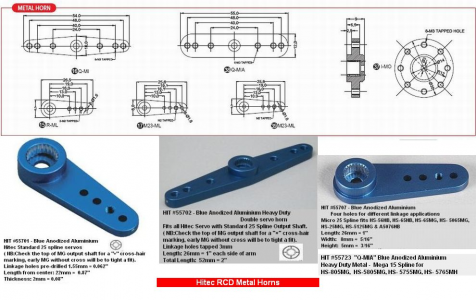- Joined
- Sep 5, 2013
- Messages
- 3,207
Not being really familiar with servo horns I had to look at some images to see what you guys are dealing with and to get an idea of sizes. At first I was thinking about broaching all the way through and then putting on a separate "cap" piece (basically a washer) to close off the one side so it could still be screwed to the shaft. The sizes we're dealing with are pretty small though, so separate parts become tricky.
Then when I was looking at these (just a random company I found online) I see there looks like a small clearance groove inside the bore where the splines end. That's not real hard to do on a lathe with something like an o-ring groove cutter, and then maybe the spline teeth themselves could be broached in singly using the lathe carriage method where an appropriately shaped piece of HSS is held in the toolholder and the carriage run back and forth the same way as a shaper works. On small parts with small features this method works quite well although on larger features where one might have bigger cuts it can be a bit hard on the carriage. Once you figured out the spline pattern a custom indexing plate could set the proper interval fairly quickly.
Just a thought.
-frank

Then when I was looking at these (just a random company I found online) I see there looks like a small clearance groove inside the bore where the splines end. That's not real hard to do on a lathe with something like an o-ring groove cutter, and then maybe the spline teeth themselves could be broached in singly using the lathe carriage method where an appropriately shaped piece of HSS is held in the toolholder and the carriage run back and forth the same way as a shaper works. On small parts with small features this method works quite well although on larger features where one might have bigger cuts it can be a bit hard on the carriage. Once you figured out the spline pattern a custom indexing plate could set the proper interval fairly quickly.
Just a thought.
-frank


